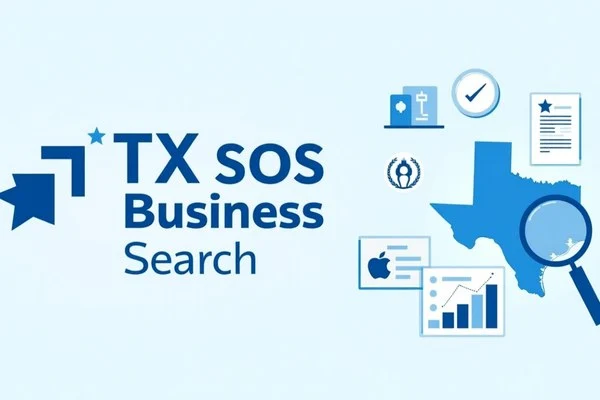Make Money with Affiliate Marketing through affiliate marketing, which stands out as one of the most accessible and profitable methods for earning an income online. With millions of products and services available for promotion, anyone—from bloggers and influencers to niche website owners—can tap into this dynamic field. As the digital economy continues to expand, understanding how to systematically build and optimize your affiliate business can place you in an enviable financial position. This guide aims to equip you with everything needed to launch, scale, and thrive in affiliate marketing, following the highest standards for quality and compliance.
What is Affiliate Marketing?
In simple terms, affiliate marketing is a performance-based business model where individuals (affiliates or publishers) earn commissions by promoting products or services offered by other companies (merchants or advertisers). When a customer completes a purchase or another desired action using an affiliate’s unique tracking link, the affiliate receives a reward, typically a percentage of the sale value or a fixed fee.
Understanding How It Works?
Affiliate marketing relies on partnerships among several key parties:
-
Merchant (Advertiser): The creator, owner, or seller of a product or service.
-
Affiliate (Publisher): An individual or business that promotes these offers through content or advertising.
-
Consumer: The end user who interacts with affiliate content and completes a purchase or action.
-
Affiliate Network or Program: A platform or system that facilitates tracking, reporting, payments, and compliance between merchants and affiliates.
The Benefits of Affiliate Marketing
Affiliate marketing is appealing for many reasons, including its flexibility. Here are the main advantages:
-
Low Barrier to Entry: No need to buy inventory, handle shipping, or manage customer support.
-
Scalability: You can promote multiple products across different niches from anywhere in the world.
-
Performance-Based: Revenue is directly tied to results, allowing motivated individuals to earn more as they improve their skills.
-
Passive Income Potential: High-quality, evergreen content can generate recurring commissions over time with little additional effort.
-
Diverse Monetization Options: Affiliate marketing can be mixed with other income streams such as display ads, sponsored posts, and your product sales.
Core Types of Affiliate Marketing
Not every affiliate model is the same. Here are the primary types to consider:
-
Content Affiliate: Uses blogs, YouTube, social media, or podcasts to create compelling content around product recommendations.
-
Coupon/Deal Affiliate: Focuses on sharing discounts, coupons, and exclusive offers, often leveraging high-traffic deal sites.
-
Review Sites: Publishes detailed product/service reviews and comparison guides to build trust and influence buying decisions.
-
Email Affiliates: Builds and nurtures an email list to deliver targeted affiliate promotions directly to inboxes.
-
Paid Search Affiliates: Uses pay-per-click advertising on platforms like Google Ads to drive targeted traffic to affiliate offers (with program compliance).
Step-by-Step Guide to Building a Profitable Affiliate Marketing Business
1. Choose the Right Niche
Selecting a niche is the cornerstone of success in affiliate marketing. The right niche should balance your passion and expertise with measurable demand and strong affiliate program options. Consider these points:
-
Interest & Knowledge: Choose a topic you love or are willing to learn deeply about.
-
Market Demand: Analyze search volumes and trends to validate consistent interest.
-
Commercial Intent: Look for niches with products or services people are willing to purchase online.
Popular niches include personal finance, health and fitness, technology, beauty, travel, home improvement, and online education, but the real magic lies in going “niche within a niche” to serve a specific, committed audience.
2. Research and Evaluate Affiliate Programs
Once you’ve settled on a niche, research relevant affiliate programs. Look for:
-
Reputation and Track Record: Prioritize companies known for reliable payments and strong product value.
-
Competitive Commissions: High-value products or recurring subscriptions can lead to better long-term earnings.
-
Support and Resources: Quality affiliate programs offer marketing materials, real-time reporting, and responsive support.
-
Cookie Duration: Longer tracking windows (30+ days) increase your earning likelihood.
-
Conversion Rates: Look for affiliate offers with good historical performance and user reviews.
Some of the world’s leading affiliate networks include ShareASale, Commission Junction, Impact, FlexOffers, and Amazon Associates. Many established brands also run in-house affiliate programs.
3. Build a Strong and Professional Platform
A robust online presence is essential. Most affiliates succeed through:
-
Blogs and Niche Websites: Offers full control, customizability, and authority-building opportunities.
-
YouTube Channels: Leverages video content for demonstrations, unboxing, and testimonials.
-
Social Media: Instagram, Facebook, and TikTok excel for visual products and lifestyle niches.
-
Podcasts: Audio segments for in-depth reviews and discussion, often with loyal, niche audiences.
Invest in quality design, intuitive navigation, and fast loading speeds. Use a branded, memorable domain name and secure reliable hosting. Optimize your site’s mobile responsiveness to meet the needs of today’s users.
4. Craft High-Quality, Helpful Content
Content is the engine of affiliate marketing. Effective affiliate content focuses on being informative, transparent, and valuable. Key content formats include:
-
How-to Guides: Detailed walkthroughs addressing user challenges and illustrating product use cases.
-
Product Reviews: Honest, feature-rich assessments built on personal testing or detailed research.
-
Comparison Posts: Side-by-side comparisons highlighting the benefits and drawbacks of multiple products.
-
Listicles: Curated best-of lists for easy skimming and informed choices.
-
Case Studies & Tutorials: Stories and step-by-step advice build authority and real-world trust.
Always prioritize clarity, accuracy, and a conversational, friendly tone. Address user questions, pain points, and buying hesitations. Supplement text with images, infographics, and relevant tables for added value.
5. Optimize Content for Search Engines (SEO)
SEO is vital for creating sustainable, organic traffic. Important strategies include:
Keyword Research
-
Use tools like Google Keyword Planner, Ahrefs, or SEMrush to uncover high-volume, low-competition phrases.
-
Find semantic variations and related topics to build topical authority.
-
Map keywords by intent: informational, transactional, and navigational.
On-Page Optimization
-
Include primary keywords in titles, meta descriptions, headings, and naturally throughout content.
-
Use descriptive, keyword-rich URLs.
-
Add internal links to relevant site pages and high-authority outbound references.
-
Use alt text on images and descriptive captions for accessibility.
-
Ensure mobile usability and fast loading times for all pages.
Content Depth and Clustering
-
Cover topics comprehensively, answering core questions and providing extra resources.
-
Use clusters or “topic hubs,” connecting cornerstone content with related subtopics for a strong site structure.
Off-Page SEO
-
Obtain quality backlinks through guest posting, partnerships, and by producing content others want to cite.
-
Promote content on social channels, forums, and communities related to your niche.
6. Drive Targeted Traffic Consistently
Traffic is the lifeblood of affiliate marketing. Combine these channels for maximum reach:
-
Organic Search: Focus on continually optimizing for SEO across all content.
-
Social Media Traffic: Share and repurpose content via multiple platforms to attract a broader audience.
-
Email Marketing: Build an email list using lead magnets and nurture subscribers with value-packed updates, exclusive tips, and occasional affiliate offers.
-
Paid Advertising: Use PPC or native advertising carefully—ensure compliance with affiliate program terms.
-
Influencer Collaborations: Cross-promote with other content creators or thought leaders for mutual audience growth.
7. Build Trust and Foster Community
Trust is crucial in affiliate marketing, both for long-term growth and compliance. Here’s how to cultivate it:
-
Transparency: Disclose affiliate relationships clearly and prominently.
-
Authenticity: Share real personal experiences or offer in-depth research to enhance credibility.
-
User Engagement: Prompt comments, answer questions, and participate in discussions to create loyal readers.
-
Community Building: Consider private groups, forums, or live webinars to build a sense of belonging and interaction.
8. Track, Analyze, and Optimize for Continuous Improvement
Measurement is key to ongoing success. Utilize:
-
Affiliate Dashboards: Monitor clicks, conversions, earnings, and trends.
-
Site Analytics (like Google Analytics): Track user behaviors, popular content, and conversion paths.
-
A/B Testing: Experiment with call-to-action buttons, layouts, and offers to optimize performance.
Harness data to double down on what’s working, phase out unproductive tactics, and continuously refine your strategy.
Advanced Affiliate Marketing Strategies
As your affiliate business matures, explore advanced strategies for diversification and scale:
-
Create Digital Products: Develop and sell eBooks, courses, or templates alongside affiliate offers.
-
Multi-Channel Presence: Launch a podcast, start a YouTube series, or expand to new social networks.
-
Recruit Guest Experts: Publish interviews, guest posts, or roundups featuring niche authorities.
-
Custom Tools & Calculators: Build unique comparison tools, savings calculators, or quiz funnels tailored to your niche.
-
Niche Events & Workshops: Host webinars, challenges, or workshops to deepen connections and drive affiliate product signups.
-
Scaling with Outsourcing: Bring on writers, editors, or technical support as you grow to multiply output while maintaining quality.
Legal and Ethical Considerations
Compliance protects your reputation and income. Always adhere to affiliate marketing laws and guidelines:
-
Affiliate Disclosure: Use clear language near affiliate links (such as “We may earn a commission if you purchase through our links”).
-
Privacy and Data Protection: If collecting user data (emails, analytics), provide clear privacy policies and adhere to data protection rules such as GDPR.
-
Original Content: Never plagiarize. Use only your writing, images, and ideas (or those you have the right to use).
-
Advertising Standards: Avoid exaggerated or unsubstantiated claims. Be honest about your experiences and the product’s merits.
Common Mistakes and How to Avoid Them?
Affiliate success takes time and effort. Watch out for these pitfalls:
-
Overloading Pages with Links: Too many links can deter users and reduce conversions—focus on quality recommendations.
-
Inadequate Content Quality: Thin, generic, or outdated content won’t build trust or rank well in search engines.
-
Ignoring Mobile Optimization: Most traffic is mobile—ensure seamless experiences on all devices.
-
Failure to Diversify: Don’t rely solely on one affiliate program, product, or traffic channel.
-
Neglecting Your Audience’s Needs: Prioritize the reader’s interests and add value beyond simple product pitches.
Essential Tools for Affiliate Marketers
To scale and professionalize your operations, consider:
-
Keyword Research Tools: SEMrush, Ahrefs, Moz
-
Content Management Systems: WordPress, Ghost
-
Analytics: Google Analytics, Hotjar
-
Link Management: Pretty Links, ThirstyAffiliates
-
Email Marketing: ConvertKit, Mailchimp
-
Design Tools: Canva, Adobe Creative Cloud
The Road to Long-Term Success
Achieving a steady income through affiliate marketing isn’t about quick wins—it requires a focus on quality, integrity, and an ongoing willingness to learn. Stay curious about your niche, adapt to industry changes, and always put your audience’s needs at the center of your strategy. By doing so, you’ll build not just a profitable business but a credible and lasting online presence that stands the test of time.
FAQs:
How Long Before I Make Money with Affiliate Marketing?
Earnings vary greatly and depend on niche selection, content quality, and traffic generation. Most see initial results in a few months, but meaningful income typically requires six to twelve months of consistent effort.
Is Affiliate Marketing a Good Choice for Beginners?
Yes. Many beginners succeed by starting small, learning step by step, and scaling as skills and confidence grow. Educational content and community support are widely available.
What Kinds of Products Work Best?
Products that meet a genuine need and provide real value tend to perform best. Focus on offers that align with your readers’ interests, have strong reviews, and offer fair commissions. Always research and, if possible, experience the products you recommend.
How Do I Ensure My Content Ranks High in Search Engines?
Concentrate on unique, comprehensive content, robust keyword research, and technical SEO. Build backlinks over time and keep user experience at the forefront. Content quality, site speed, and proper linking are all important for rankings.









